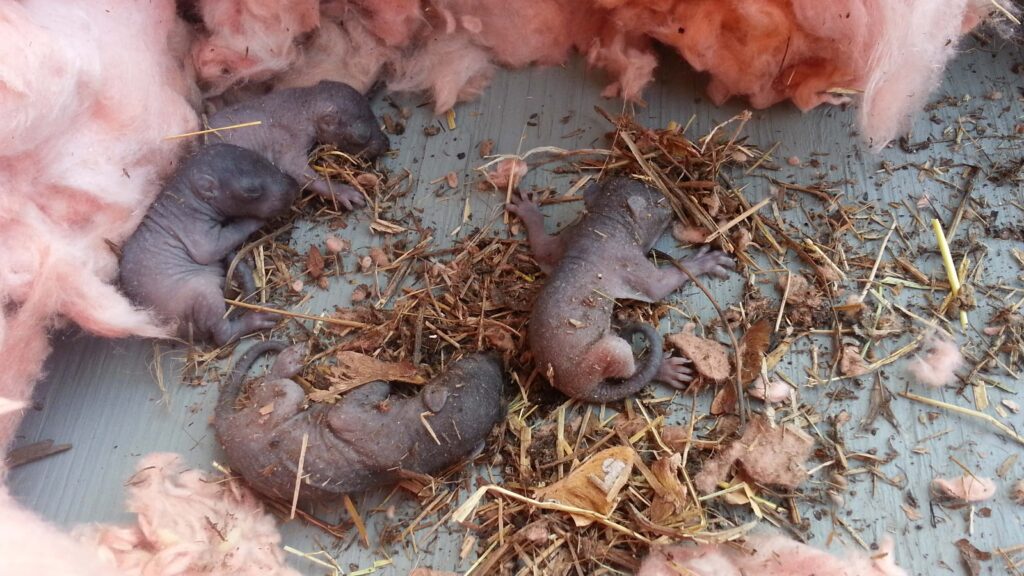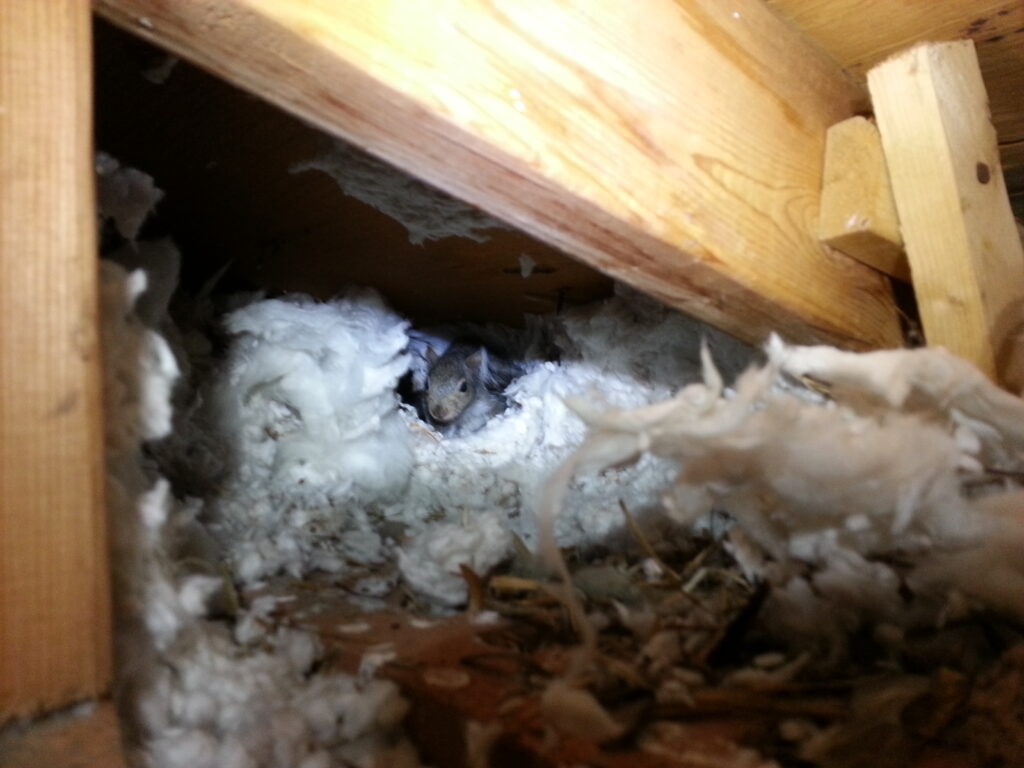Canada’s wildlife and human populations often converge whether intentionally or not as they share more and more space. This is why Ontario’s residents must prepare themselves to see these furry little foragers inside their attics. Often baby squirrels will be seen in these spaces and as such great care must be taken when carrying out squirrel removal strategies.
Squirrels in Human Territories
If you see a squirrel on your roof or in your attic, it is probably a female squirrel. Squirrels who invade homes are usually females seeking shelter to nurse their young. When you see them scurrying about it is probably to forage for food to take back to the babies in the nest. You can reasonably expect a squirrel in your space to be nursing a litter of baby squirrels if you see it in early spring or late summer as these are the two prime litter producing periods.
Even if your understanding of the nature of squirrel invasions makes you compassionate towards the animals, you cannot ignore the negative impact of their presence on your property. As the baby squirrels grow so do their powerful front teeth. These teeth are quite powerful chompers that the furry foragers use to engineer their homes and forage for food. As the baby squirrels grow, they must keep their front teeth in check. They do this by gnawing on wood and other soft material. This gnawing serves two purposes- it keeps the teeth sharp and it prevents them from becoming too long.

Signs of a Squirrel Nest in Your Building
You’ll know baby squirrels are living in your attic when certain signs emerge. One obvious sign is the sound of baby squirrels crying, as they tend to do when they get hungry. You’ll also notice the sounds and sights of squirrel activity such as scurrying – just around sunset and early in the morning as these are the prime periods for mommy squirrels to go on food runs. You might venture into your attic and notice signs of gnawing or scratching on the wooden sections. Torn or shredded insulation is also an
indicator that squirrels have been taking parts of the building to make nests. Insulation, in particular, is a favourite nest building item for nursing squirrels. Of course, seeing the actual nest with baby squirrels is the most obvious sign you can find.

Why DIY Squirrel Removal is a Bad Idea
DIY squirrel removal should never be attempted especially when baby squirrels are involved. DIY repellants like spicy or peppery items can harm adult squirrels and are even more dangerous for baby squirrels. Additionally, many DIY squirrel repellents fail as they are either applied to weakly or removed by the elements.
Physical removal of fledgling squirrel families is too technical for the DIY approach and it usually results in harm to the fragile babies. Some building owners may also unintentionally threaten the survival of babies by excluding the mothers from the building. This happens when the assumption is made that space is clear of all squirrels and the entrance points are sealed barring the mother from tending to her babies who are now trapped inside.
Recommended Course of Action to Handle Baby Squirrel Removal
If you come upon baby squirrels in your attic, your first action should be to call in expert wildlife technicians. You should never attempt to move the baby squirrels themselves. The mother will likely come for her babies when she hears them crying. You will have to exercise patience though, as a mother squirrel whose nest has been disturbed will probably be a little hesitant to return.
Humane wildlife control teams like Skedaddle are experts at humane and effective squirrel removal and relocation methods. Our knowledge of animal behaviour makes us ideal for handling delicate baby squirrels. We are aware of the ideal methods that can encourage reunion between mother and baby squirrels and we are also equipped with our heated baby boxes and other ideal resources to get the job done.


